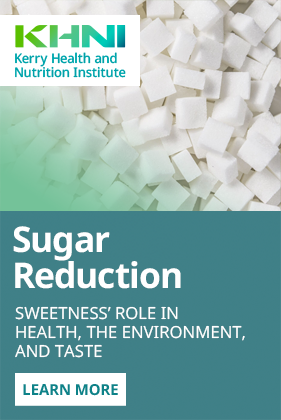Have you ever heard of the phrase “carrots can help you to see in the dark”? This long-standing belief originating from the second world war has been passed around millions of households throughout generations.1 This begs the question – can the food we consume improve our visual health?
Not only is good nutrition important for over-all health and well-being, it is also important for our eye health. Over the years, researchers have noted that diet and lifestyle can directly impact on ocular health. Several publications have highlighted that some nutrients that can assist with good eye health include antioxidants, omega 3 fatty acids, and minerals such as zinc.2
Omega-3s are essential fats that the body cannot make itself – we must get these nutrients from food. They help build cell membranes in the body and also help with processes such as blood clotting, inflammation and the contraction of our blood vessel walls (such as arteries).3
Zinc is used in our bodies to help make DNA (which creates the genetic material that is in our cells). It also helps create proteins in the body and assist with wound healing. To get more information about zinc and it’s sources, check out the KHNI article on Immunity nutrients: Immunity Nutrients At-A-Glance: Zinc – Kerry Health And Nutrition Institute
What is an antioxidant and how does it help eye health?
An antioxidant is a molecule that helps protect our cells from what are known as “free radicals”.4 Free radicals are essentially unstable molecules that can build up and cause damage to areas of our body such as DNA, lipids and proteins.5 Free radicals can accumulate in the body from normal metabolic activities, but also exposure to air pollutants, chemicals and can be a consequence of cigarette smoking.6-7
It is important to protect our body against these “free radicals,” this is where consuming antioxidants come in. Examples of antioxidants include vitamin C, vitamin E and vitamin A (which includes carotenoids such as Lutein & Zeaxanthin). We can get the most benefit from these antioxidants by consuming foods that contain them. For example, oranges contain vitamin C, almonds contain vitamin E. Lutein and Zeaxanthin can be found in leafy green vegetables.2-4 Not only do leafy green vegetables contain antioxidants, they also contain a variety of other beneficial vitamins and minerals that support our overall health and nutrition.8
With the understanding of what antioxidants are and what foods contain them, its important to understand how this relates to eye health. Antioxidants help combat free radicals, if there are too many free radicals present, this can kick off a process known as oxidative stress. 5 The eye as an organ can be particularly exposed to oxidative stress as our eyes are often exposed to the elements. From light exposure to general environmental exposure, our eyes go through a lot daily.9
With ageing, our natural ability to combat this oxidative stress decreases. This can cause us to develop age related eye conditions such as age-related macular degeneration (AGM), diabetic retinopathy and cataracts. 10
Age-related macular degeneration (AMD) is one of the most common vision impairments with age, approximately 50 million people suffer from it worldwide. It can cause a blurry area near the centre of your vision. There are two types, dry and wet. Dry AMD causes gradual vision loss and can cause yellow deposits under the retina. The wet type AMD can impact the blood vessels that supply the eye, this in turn could cause issues which lead to further vision loss.9 Cataracts are a clouding at the lens of the eye and can also occur with ageing.11 Diabetic retinopathy is a consequence of having diabetes. This is where the blood vessels behind the eye are not delivering sufficient blood and oxygen to the back of the retina- causing vision problems.12
With an ageing population, conditions such as macular degeneration, cataracts and even diabetic retinopathy could potentially become more common place. This is why it is important to aim to follow a balanced and healthy diet to reduce the impact these conditions may have in our everyday lives.
Beyond Nutrition, what else can help improve eye health?
Along with good nutrition, there are several other methods we can utilise to take care of our eyes. Nutrition and movement go hand in hand for general health and well-being. This can also play a beneficial role in the health of the eye. Along with helping blood flow around the body it can give you other benefits too such as increased metabolism and better sleep. Important for resting your eyes! If you feel your vision waning, it may be a good time to have a vision check-up. By using the correct prescription for your vision needs, you can put less strain on your eyes from squinting and having blurred vision.

If you work in environments where you need to protect your eyes, always ensure that they are safe. Wear sunglasses or safety goggles when needed and never compromise on protecting your eyes.
Reduce screen time where possible and keep your eyes on their toes by looking around your environment and far away to test your vision. Follow the 20/20/20 rule – this rule advises us to take a break from screens every 20 minutes, look about 20 feet away for 20 seconds. To give our eyes a break– more to be found here: Healthy Vision Tips | National Eye Institute (nih.gov).
Lastly, as much as possible, it is advised to avoid smoking. Smoking can increase oxidative stress in the body which does not help with eye health and our general health as well. 6-7,13
In summary- it is very important that we look after our eyes, not only are they the windows to the soul but also the lens in which we see the world. We must be mindful that our diet and lifestyle choices can potentially influence the quality of our vision, and we need to understand that the choices we make are important to optimise our overall wellness.
-
Hilary McCahill
 Hilary McCahill is a registered dietitian fascinated with food safety, quality, and sustainable nutrition. She has a qualification in human nutrition and dietetics and is registered in both Ireland and the UK. She is passionate about high quality food production and using nutrition communication effectively to breakdown scientific findings (to ensure they are accessible to all). True to her interest in food safety, she is currently working within the quality sector in food industry.”
Hilary McCahill is a registered dietitian fascinated with food safety, quality, and sustainable nutrition. She has a qualification in human nutrition and dietetics and is registered in both Ireland and the UK. She is passionate about high quality food production and using nutrition communication effectively to breakdown scientific findings (to ensure they are accessible to all). True to her interest in food safety, she is currently working within the quality sector in food industry.” -
References
- Villazon L. Do carrots really help you see in the dark? [Internet]. 2012 [cited 2024 Mar 29]. Available from: https://www.sciencefocus.com/the-human-body/do-carrots-really-help-you-see-in-the-dark
- Gregori NZ. Diet and Nutrition [Internet]. 2023 [cited 2024 Mar 29]. Available from: https://www.aao.org/eye-health/tips-prevention/diet-nutrition
- Harvard School of Public Health (2023) Omega-3 fatty acids: An essential contribution, The Nutrition Source. Available at: https://www.hsph.harvard.edu/nutritionsource/what-should-you-eat/fats-and-cholesterol/types-of-fat/omega-3-fats/ (Accessed: 08 May 2024).
- Harvard School of Public Health. Antioxidants [Internet]. Harvard School of Public Health; 2021 [cited 2024 Mar 29]. Available from: https://www.hsph.harvard.edu/nutritionsource/antioxidants/
- National Cancer Institute. NCI Dictionary of Cancer terms [Internet]. National Cancer Institute; [cited 2024 Mar 29]. Available from: https://www.cancer.gov/publications/dictionaries/cancer-terms/def/free-radical
- Lobo V, Patil A, Phatak A, Chandra N. Free radicals, antioxidants and Functional Foods: Impact on human health. Pharmacognosy Reviews. 2010;4(8):118. doi:10.4103/0973-7847.70902
- Chaudhary P, Janmeda P, Docea AO, Yeskaliyeva B, Abdull Razis AF, Modu B, et al. Oxidative stress, Free Radicals and antioxidants: Potential crosstalk in the pathophysiology of human diseases. Frontiers in Chemistry. 2023 May 10;11. doi:10.3389/fchem.2023.1158198
- Abdel-Aal, E.-S.M. et al. (2013) Dietary sources of lutein and zeaxanthin carotenoids and their role in Eye Health, Nutrients. Available at: https://www.ncbi.nlm.nih.gov/pmc/articles/PMC3705341/ (Accessed: 08 May 2024).
- National Health Service. Vitamins and minerals [Internet]. NHS; 2020 [cited 2024 Mar 29]. Available from: https://www.nhs.uk/conditions/vitamins-and-minerals/others/
- Masuda T, Shimazawa M, Hara H. Retinal diseases associated with oxidative stress and the effects of a free radical scavenger (Edaravone). Oxidative Medicine and Cellular Longevity. 2017;2017:1–14. doi:10.1155/2017/9208489
- Lawrenson JG, Downie LE. Nutrition and eye health. Nutrients. 2019 Sept 6;11(9):2123. doi:10.3390/nu11092123
- National Health Service. Diabetic retinopathy [Internet]. NHS; 2021 [cited 2024 Mar 29]. Available from: https://www.nhs.uk/conditions/diabetic-retinopathy/
- Valavanidis A, Vlachogianni T, Fiotakis K. Tobacco smoke: Involvement of reactive oxygen species and stable free radicals in mechanisms of oxidative damage, carcinogenesis and synergistic effects with other respirable particles. International Journal of Environmental Research and Public Health. 2009 Feb 2;6(2):445–62. doi:10.3390/ijerph6020445




